Introduction
Do Pigeons Sleep Standing Up: Pigeons, those ubiquitous city dwellers often found perched on statues or rooftops, have long piqued the curiosity of observers with a peculiar habit – sleeping while standing up. The sight of a pigeon seemingly taking a nap in an upright position has led many to wonder if these birds are indeed catching their Z’s while on their feet. In this exploration, we delve into the intriguing behavior of pigeons and seek to answer the age-old question: Do pigeons sleep standing up?
Pigeons, scientifically known as Columba livia, are a fascinating species with unique adaptations for urban life. Their sleep habits are just one facet of their behavior that has captivated both casual observers and researchers. To understand whether pigeons truly sleep while standing, we will examine the science behind their sleep patterns, the role of their specialized anatomy, and the ecological factors that influence their behavior. Along the way, we’ll also uncover the evolutionary advantages that may explain this curious phenomenon.
Join us on this avian journey as we unravel the mystery of pigeon sleep. By the end, you’ll gain a deeper appreciation for the adaptability and survival strategies of these feathered inhabitants of our cities.
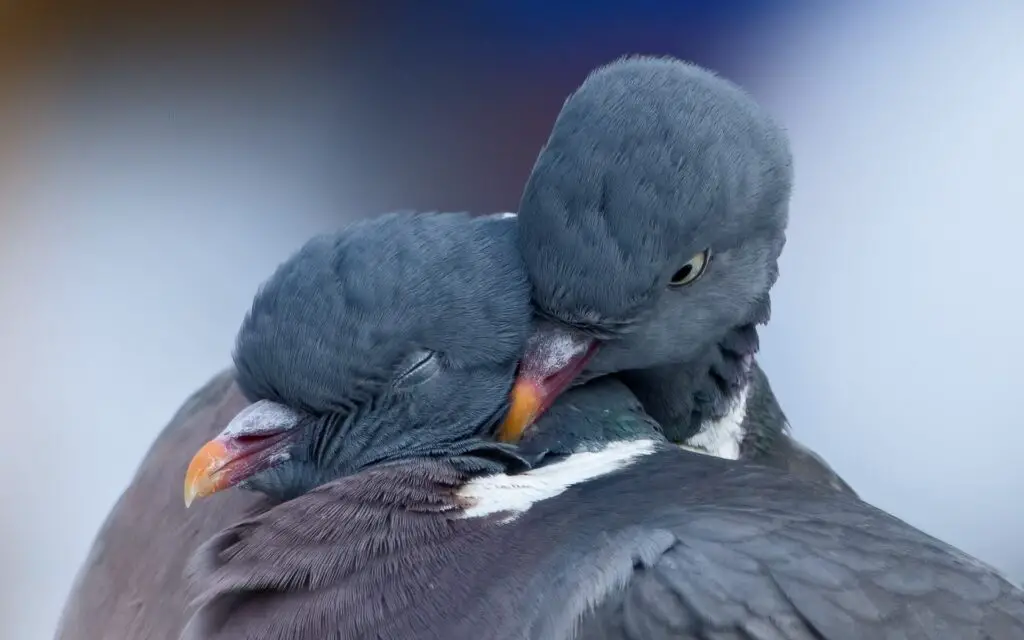
Why do pigeons sleep standing up?
Birds have no muscles in their feet nor in their legs. Each leg has 2 flexor tendons starting at the shoulder running to the toes. In a resting/sleeping state where there should be minimum calorie loss, standing on one leg technique works the best.
Pigeons, like many birds, have a unique sleeping behavior that allows them to sleep while standing up. This behavior is primarily a result of their anatomy and the need to stay alert to potential predators and environmental threats. Pigeons have a specialized tendon system in their legs that allows them to lock their knees in a fixed position when they perch. This locking mechanism, called “digital flexor tendons,” enables them to stand without using any muscle effort.
The main reason pigeons sleep while standing up is related to their survival instincts. Pigeons are prey animals, and they are constantly vulnerable to threats from predators such as cats, hawks, and humans. Sleeping while standing helps them stay vigilant and ready to take flight at a moment’s notice. It allows them to react quickly to any perceived danger, which is crucial for their survival in the wild.
While pigeons can sleep while standing, they also have the ability to rest and even take short naps by tucking their heads under their wings while perched. This semi-restful state allows them to conserve energy and still remain somewhat alert.
How does a pigeon sleep?
Like all living creatures, pigeons sleep. they sleep on a ledge, or if they are nesting, on their nest. they lay down on their underside, lid a resting chicken and snuggle in shut their eyes and sleep. They tend to sleep from dusk to dawn, waking up ready to roll when the sun rises and it’s ligh floods their vision.
Pigeons, like many birds, have a unique way of sleeping that is quite different from mammals. Their sleep patterns are adapted to their survival needs and their avian physiology. Here’s
How a pigeon sleeps:
Perching: Pigeons are known for sleeping while perched. They have a specialized tendon system in their legs that allows them to lock their knees in a fixed position when perched. This locking mechanism, called “digital flexor tendons,” enables them to stand without using any muscle effort.
Perching while sleeping is a survival strategy that helps them stay alert and ready to take flight quickly in case of danger.
One-Eye Open: Pigeons often sleep with one eye open. This behavior is known as “unihemispheric slow-wave sleep.” It means that one hemisphere of the pigeon’s brain is asleep while the other remains alert. This allows them to rest one side of their brain while staying vigilant with the other, enhancing their ability to detect predators or other threats.
Short Naps: Pigeons take short naps throughout the day and night. These naps can last for a few minutes to about half an hour. These brief periods of rest help pigeons conserve energy while still staying somewhat alert to their surroundings.
Head Tucked Under Wing: When pigeons sleep while perched, they often tuck their heads under their wings. This position helps them conserve heat and reduce their visibility to potential predators.
REM and Non-REM Sleep: Like mammals, pigeons also experience two main types of sleep: rapid eye movement (REM) sleep and non-REM sleep. During REM sleep, pigeons exhibit increased brain activity and muscle twitches, similar to mammals. Non-REM sleep is characterized by a more restful state.
In summary, pigeons have adapted to sleep while perched, often with one eye open and their heads tucked under their wings. Their sleep patterns involve short naps throughout the day and night, allowing them to rest and conserve energy while remaining somewhat vigilant to potential threats. This unique sleep behavior is essential for their survival in the wild as prey animals.
Do pigeons sleep stood up?
Thank you for helping one of our noble feral pigeons. Sounds like you have done well. Pigeons sleep in various positions. They can be standing, sitting, standing on one leg with one tucked under.
Yes, pigeons can sleep while standing up, but they don’t exclusively sleep in this position. Their ability to lock their knees in place allows them to perch on branches, ledges, or other elevated surfaces without falling, making it possible for them to rest and sleep in a perched position. However, pigeons also have the flexibility to sit down and even lie down on flat surfaces when they feel safe and comfortable. This behavior is more common during their longer periods of sleep, such as overnight.
How many hours a day do pigeons sleep?
La Trobe University sleep expert Dr. John Lesku said that while magpie sleep is more disrupted under white light compared to amber light, both types of light are equally disruptive for sleep in pigeons. “Both magpies and pigeons average 10 hours of sleep per night.
Pigeons, like most birds, do not have a fixed number of hours they sleep each day. Their sleep patterns can vary depending on factors such as environmental conditions, the availability of food, and the presence of threats. On average, pigeons may sleep for several short periods throughout the day and night, totaling about 12-15 hours of sleep. However, this sleep is often divided into brief naps rather than long, uninterrupted periods.
The ability to take short naps is advantageous for pigeons because it allows them to rest while still staying alert to potential dangers. Pigeons are known for their adaptability and can adjust their sleep patterns based on their surroundings and the level of perceived risk. In urban environments, for example, they may sleep less soundly due to the constant presence of human activity and potential disturbances.
In summary, pigeons sleep in a way that suits their survival needs. They can sleep while standing up, but they also have the ability to sit or lie down for more extended periods of rest. Their sleep patterns are flexible and adapted to their surroundings, ensuring they can both rest and remain vigilant in the face of potential threats.
Do pigeons sleep in the rain?
Large birds that live out in the open, such as gulls, hawks, pigeons or herons, usually just sit still and wait out a heavy rain. Small songbirds living in trees and shrubs may seek sheltered spots under overhanging branches or leaning trunks. Birds around towns and farms may take shelter in porches or sheds.
Pigeons, like many other birds, typically do not sleep in the rain if they can avoid it. Rain can be uncomfortable and even dangerous for birds as it can wet their feathers, making them less effective at insulating against the cold. Wet feathers can interfere with a bird’s ability to fly, making them more vulnerable to predators. Prolonged exposure to rain can also lead to health issues for pigeons, such as hypothermia.
To avoid getting wet during rainy weather, pigeons often seek shelter. This shelter can come in the form of trees, ledges, buildings, or any other suitable cover that keeps them dry. Pigeons are resourceful birds, and they will try to find a place where they can perch or huddle together with other pigeons to minimize their exposure to rain.
Where and how do pigeons sleep?
Pigeons look for safe and warm places to sleep.
Pigeons look for shelters that will keep them warm throughout the night while also protecting them from predators. They often find this shelter on roofs of homes and other buildings.
Pigeons are known for their adaptability when it comes to sleeping locations. They can sleep in various places, including trees, buildings, ledges, and even on the ground if they feel safe and protected. Their sleeping habits are closely tied to their survival instincts, which involve staying alert to potential threats even while resting.
While pigeons are capable of sleeping standing up, they also have the ability to sit down or lie down for more extended periods of rest. Their sleep patterns can be quite flexible, depending on their surroundings and the level of perceived risk. In urban environments, where they coexist with humans, pigeons may adjust their sleep patterns to adapt to the presence of artificial light, noise, and other disturbances.
Do pigeons sleep lying down?
It might also be not quite comfortable yet enough to relax in that manner around you and in it’s strange environment. yes pigeons lie down regardless of them been sick or not.
Pigeons are capable of sleeping lying down, especially during their longer periods of rest at night. When pigeons lie down to sleep, they often tuck their heads under their wings to conserve heat and reduce their visibility to potential predators. This lying-down position allows them to achieve a more restful sleep compared to shorter naps during the day when they might sleep while perched.
However, pigeons do not exclusively sleep lying down. Their ability to lock their knees in a fixed position when perched allows them to sleep while standing up, which helps them stay alert and take quick flight in response to danger. The choice between lying down and sleeping standing up depends on the pigeon’s perceived level of safety and comfort.
Can pigeons sleep in light?
In the wild, birds might choose to avoid sleeping under lights, but some wild pigeons and magpies have been found to sleep in conditions like those in the study, says Farley Connelly at the University of Melbourne and La Trobe University, Australia, who co-authored the study.
Pigeons, like many birds, are sensitive to changes in light and can adapt their sleep patterns accordingly. In well-lit urban environments, pigeons may adjust their sleep schedule to some extent, taking shorter and more frequent naps during the day and reserving longer periods of rest for nighttime when it’s typically darker and quieter.
While pigeons can tolerate some ambient light, excessive or continuous light can disrupt their sleep patterns. Pigeons, like humans, have circadian rhythms that regulate their sleep-wake cycles, and prolonged exposure to light during their normal sleeping hours can interfere with these rhythms and impact their overall health and well-being.
In summary, pigeons are adaptable when it comes to their sleeping habits. They can sleep in various positions, including lying down, and will seek shelter to avoid rain. Their response to light depends on the level of illumination and their need to stay vigilant to potential threats, but excessive light exposure can disrupt their sleep patterns.
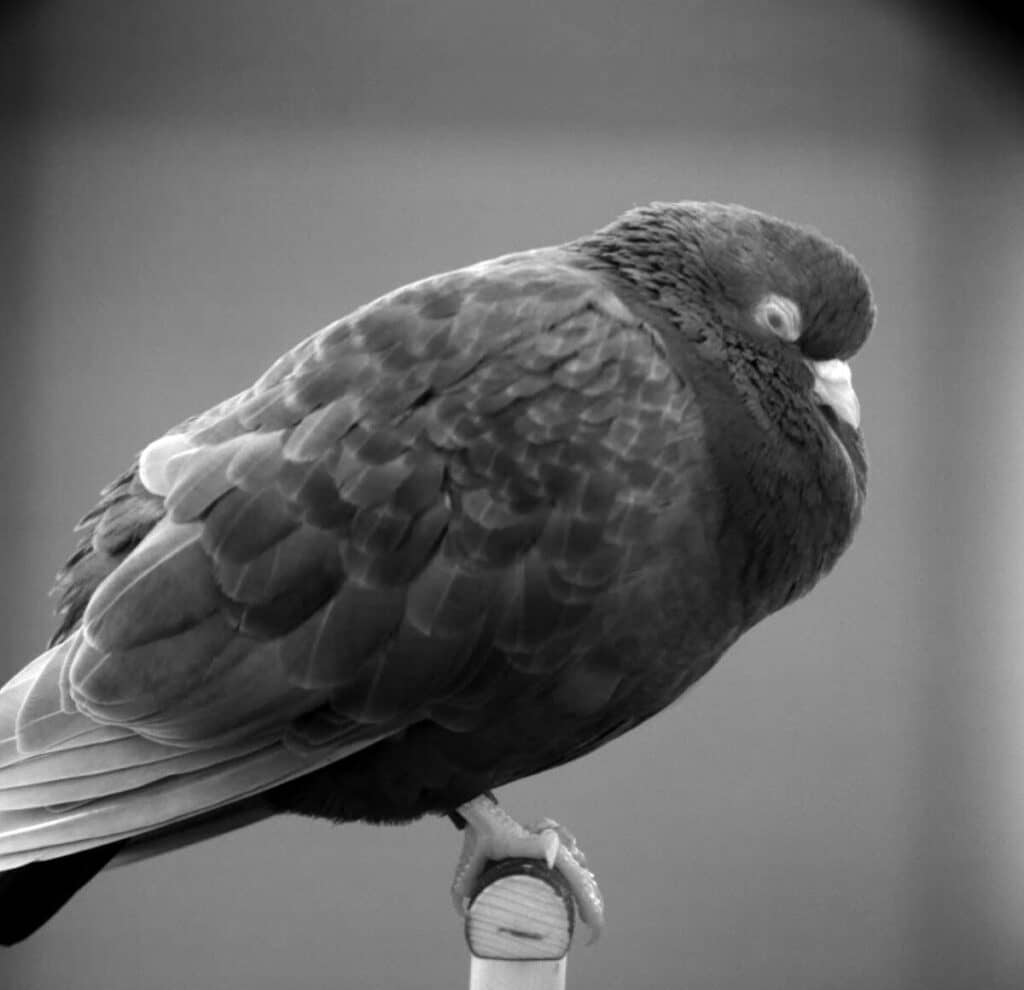
Conclusion
The question of whether pigeons sleep standing up has been a source of fascination for bird enthusiasts and curious observers. Through our exploration, we’ve discovered that pigeons do, in fact, have the remarkable ability to sleep while perched, often in a standing or semi-standing position. This ability is made possible by a unique adaptation in their physiology and behavior.
Pigeons employ a sleep mechanism known as unihemispheric slow-wave sleep (USWS). This means that only one hemisphere of their brain sleeps at a time, while the other remains alert. This partial sleep mode allows them to remain vigilant for potential threats while conserving energy during rest. In essence, pigeons can switch off one half of their brain to rest while keeping the other half active, enabling them to maintain their upright position on a perch.
The evolutionary advantage of this sleep behavior lies in the pigeons’ ability to survive in their often urban and predator-filled environments. It allows them to stay alert to dangers like predators while roosting in trees or on buildings. Pigeons can adjust the duration and depth of their sleep based on their perceived level of safety.
Pigeons’ ability to sleep while standing up is a fascinating adaptation that has contributed to their success as urban birds. It exemplifies the remarkable ways in which different species have evolved to adapt to their environments. So, the next time you see a pigeon perched with its eyes closed, you’ll know that it’s not just resting – it’s engaging in a unique form of avian slumber, keeping one eye open to the world around it.

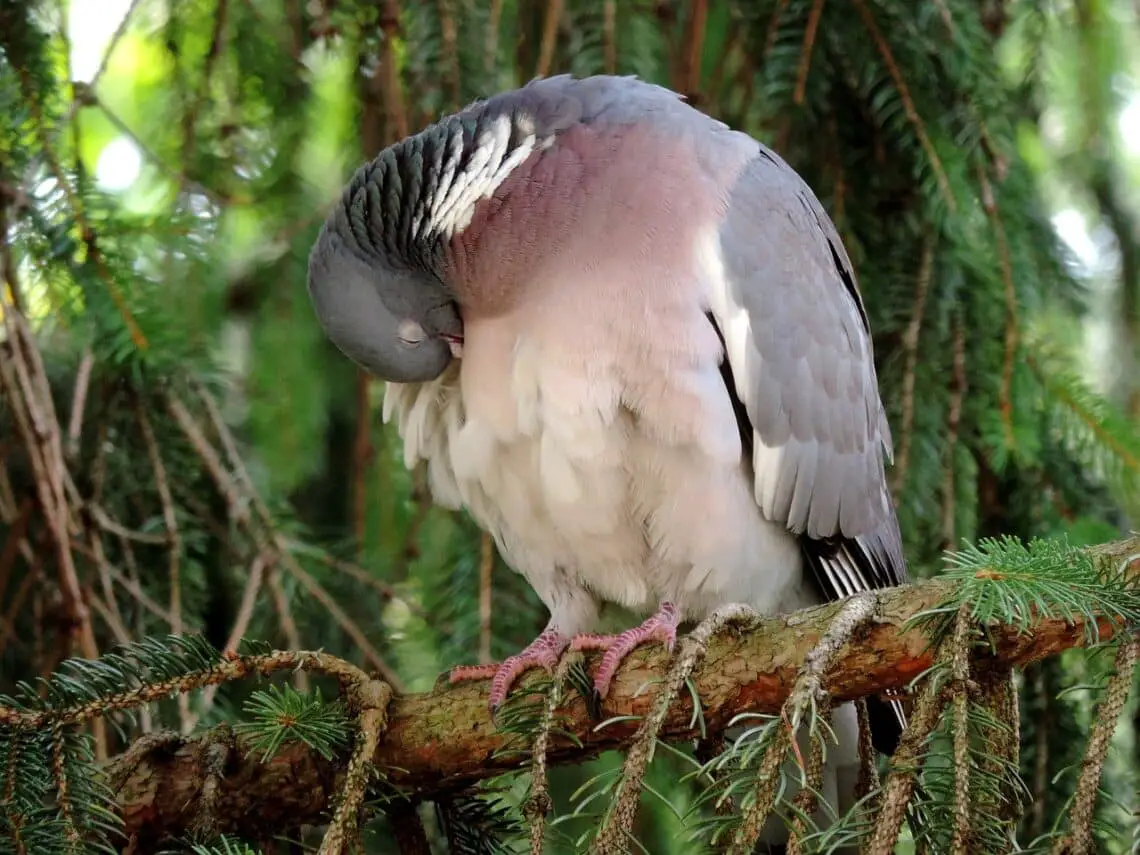
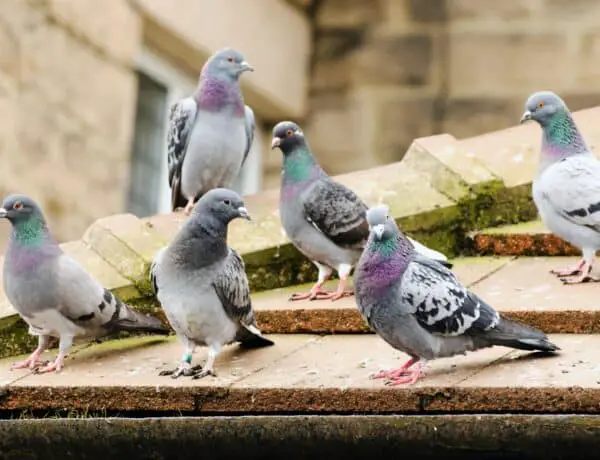
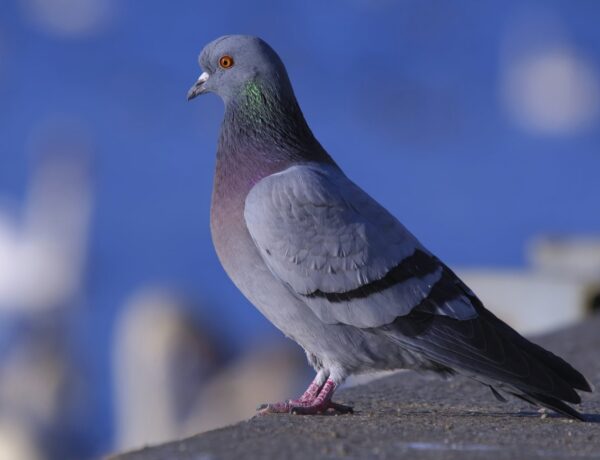
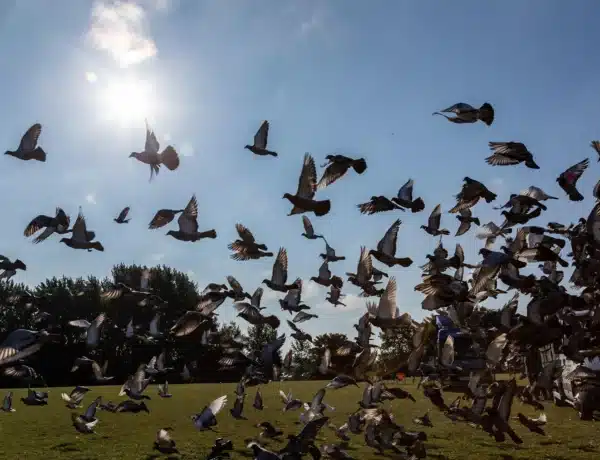
No Comments